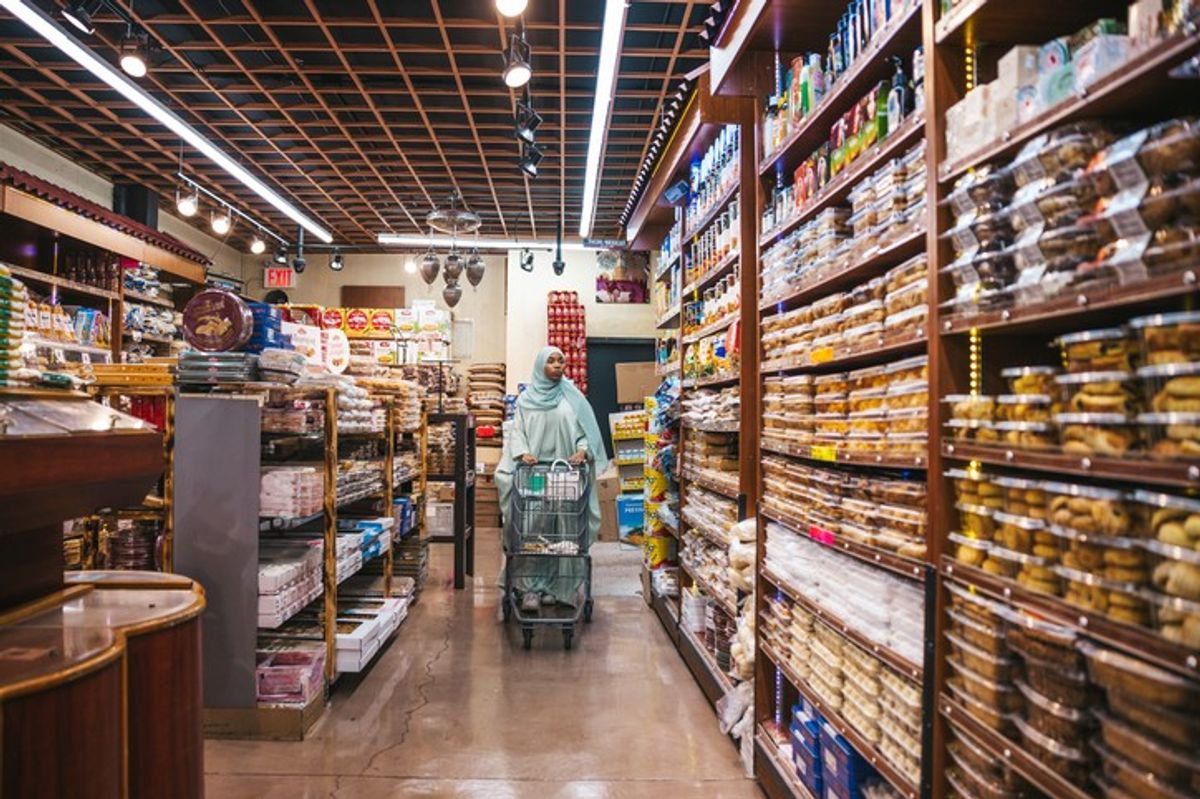In a country as richly diverse as ours, where nearly one in four people identify with an ethnic minority background, shoppers today bring with them a tapestry of culinary traditions, tastes, and dietary preferences.
This multicultural makeup means food retail is no longer a one-size-fits-all game. Today’s Britain is a nation of biryanis and baos, jerk chicken and kimchi, borscht and burritos.
From Mexican tortillas to Japanese ramen, Polish pickles to Caribbean hot sauces, the “world foods” category has exploded in popularity. No longer a niche, global cuisines are now enjoyed by the majority of UK consumers.
Traditional Italian pastas and sauces – once considered “foreign” – are practically mainstream, and emerging favorites like Mexican, Caribbean, Polish/Eastern European, and African foods are quickly gaining ground.
This surging appetite for global cuisine is reflected in market growth. The UK’s world foods retail market saw a robust +7.7 per cent growth in 2022 alone, even as economic headwinds blew.
According to Mintel’s World Cuisines Report, an astonishing 92 per cent of Britons cooked or ate world cuisines at home in the first quarter of2023.
In other words, virtually everyone is bringing global flavors to their dinner table. This trend is driven both by the UK’s increasingly diverse population and by adventurous foodies seeking new tastes.
Simply put, consumers now expect to find teriyaki sauce or tikka masala paste in any well-stocked shop, including convenience stores.
Clearly, global food is now a go-to, not a niche.
Anna Beheshti, Tilda’s Head of Marketing, agrees, saying Brits’ continued appetite for diverse, authentic flavours at home is fueling growth in world food and drink, with more and more shoppers turning to the category for their everyday staples.
“Tilda has played a leading role in this cultural shift. As the UK’s number one rice brand, we’ve led the category in both value and volume growth – a testament to over 50 years of expertise in sourcing the best-quality grains and championing global cuisine.
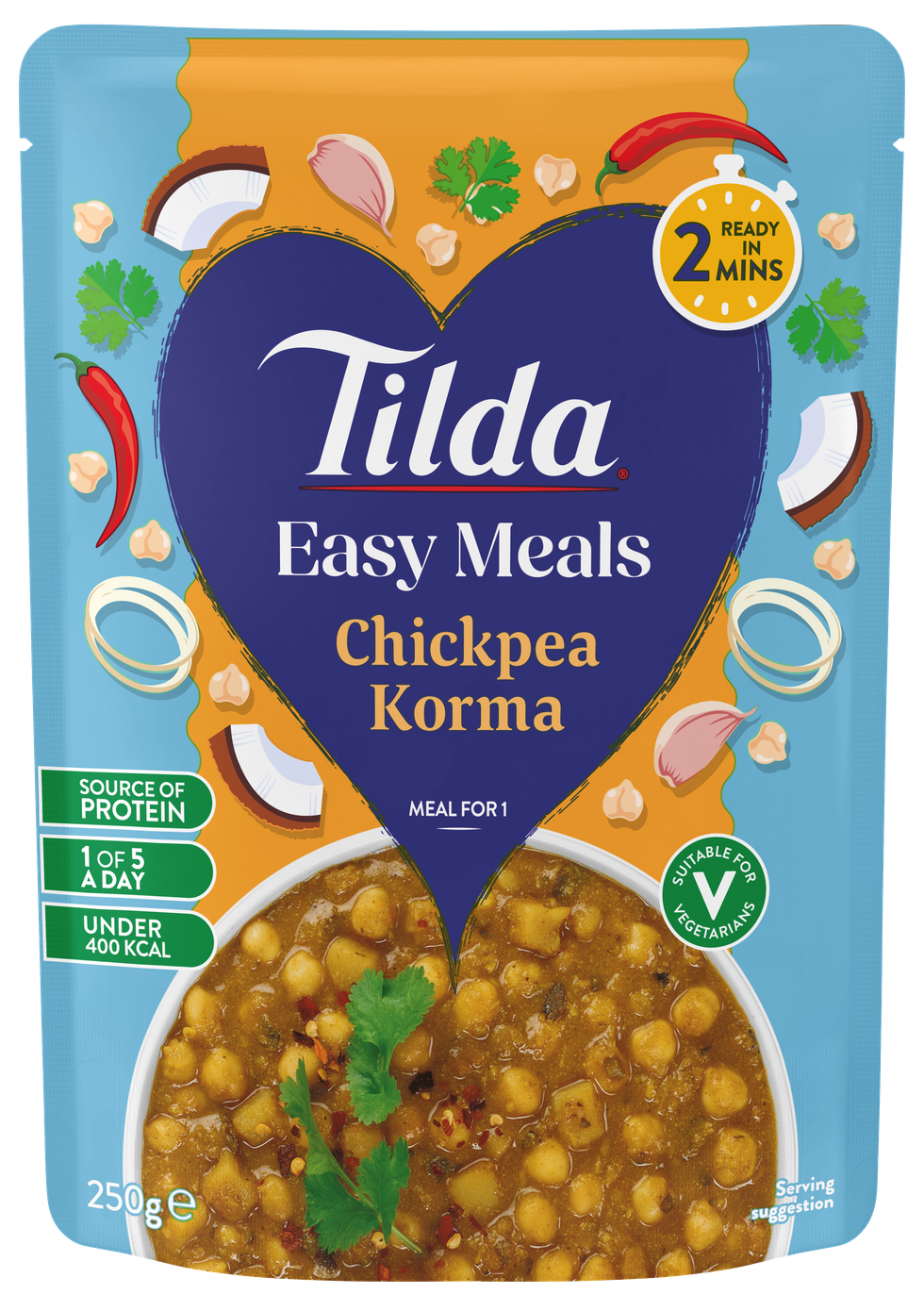
“Shoppers trust us to bring authentic tastes to their tables, and our expanding portfolio – spanning dry rice, ready-to-heat pouches and plant-based sides and meals – is helping them enjoy delicious world flavours with ease.”
Upuli Ambawatta, brand manager at leading speciality food importer and distributor Empire Bespoke Foods (EBF), agrees, saying world food and drink is no longer a niche market and some cuisines such as Italian and even Indian hardly are any longer counted as foreign.
Ambawatta says, “Over 79 per cent of UK adults consume Oriental food and 76 per cent enjoy Indian dishes. Besides these two major players, the ethnic foods market also includes Mexican, Caribbean, Polish and Baltic/Scandinavian, Arabic and African food.
“Increasingly, formerly ‘exotic’ cuisines such as Korean, Thai and Latin American are entering the mainstream.
“It is therefore more important than ever for retailers to get their world food and drink fixture right.
“Retailers who neglect to recognise the tremendous demand for foreign and ethnic ingredients and products by stocking a selection on their shelves will be missing out on considerable revenue.”
World cuisine’s reputation as a cheaper alternative to eating out or ordering takeaways has boosted sales during tough times. Why splurge on takeaway pad Thai when you can grab noodles, veggies and a sauce from your local shop and whip up a feast at home?
Emma Macorison from Tropical Sun foods agrees.
Macorison shares with Asian Trader, “As the cost-of-living crisis continues to squeeze spending, shoppers are cutting back on premium cuts like steak and instead turning to budget-friendly BBQ classics, dialing up the flavour with global sauces and marinades.
“Hot sauces, jerk BBQ glazes, and chilli-laced mayos are flying off the shelves, showing that while consumers are economising, they’re not compromising on taste.
“Even mayonnaise is getting a fiery twist, as flavour becomes the main event. It’s no surprise, then, that the Jerk Burger has firmly entered the mainstream.”
With gourmet burger chains elevating expectations, shoppers are no longer settling for a limp patty in a bap. Products like Tropical Sun’s Great Taste Award-winning jerk seasoning are helping consumers recreate street food-style dishes at home with ease.
“What’s more, 20 per cent of UK consumers are actively looking to add Caribbean and Indian flavour profiles to their BBQs, signaling a shift from traditional British barbecue to something far more global,” Macorison adds.
All these shifts in consumer taste spell a major opportunity for the convenience sector. Britain’s nearly 50,000 convenience stores are uniquely positioned to ride the world foods wave.
A World of Choices
“World foods” is an incredibly broad umbrella. What exactly should a convenience retailer stock to catch this wave? While specifics depend on your local customer base, successful stores often cover a range of major imported and ethnic food categories.
The UK’s love affair with Indian cuisine is long-standing. Key products include curry pastes and sauces (from brands like Patak’s or Shan), spice blends (garam masala, turmeric, chili powder), lentils and beans (for dals), basmati rice, pickles and chutneys, and ready-made snacks (samosas, bombaymix).
According to Beheshti from Tilda, a successful world food offering starts with the essentials.
Beheshti says, “Store-cupboard staples like Tilda Pure Basmati with our 500g and 5kg packs ranking as the top-selling Dry Rice SKUs in their respective formats have helped drive the mainstream appeal of world food and drink, so should feature in a prominent on-shelf position.
“But variety is key to expanding appeal among different communities. For example, products like Tilda Golden Sella Basmati, which is non-sticky and resilient to overcooking, are ideal for making light work of large-scale cooking, whether you’re cooking up a biryani, jollof or preparing for iftar.
“There’s also a huge headroom to drive sales growth with convenience-led innovation that meets today’s demand for speed, nutrition and inspiration.
“Bestsellers like our Tilda Coconut and Tilda Pilau 250g pouches offer flavourful solutions for time-pressed shoppers, helping them create internationally inspired meals in minutes. These formats reduce decision fatigue and have won loyalty by addressing real-life shoppers needs.”
Don’t forget staple ingredients such as chapatti flour, naan bread, and poppadoms if space allows.
Often labeled “Oriental” foods, Chinese, Southeast Asian, Japanese, Korean is a booming segment driving much of the category growth. Soy sauce (Kikkoman or Pearl River Bridge), oyster and fish sauces, instant noodles (from Chinese chowmein to Korean ramen), sushi rice and nori, Thai curry kits, stir-fry sauces, kimchi, miso soup are just a few hot sellers.
With East Asian takeaways and cooking shows hugely popular, home cooks are getting adventurous. For example, soy sauce has become a pantry staple. Niche items like ramen noodles or gochujang chili paste can set your store apart and appeal to foodies.
And if you have a student population nearby, instant noodles and snacks from Japan or Korea can be extremely popular. Asian snacks (Pocky sticks, shrimp crackers, mochi) and desserts (like pandan cakes or Taiwanese bubble tea kits) can also add flair to your impulse aisles.
Mexican food has also firmly planted itself in British kitchens, thanks in part to brands like Old El Paso. Tortillas, taco shells, salsa, guacamole mix, refried beans, jalapeños, and seasoning packs are must-haves to enable “taco night” at home.
Beyond Mexican, consider carrying Tex-Mex and Latin American specialties like hot sauces (Cholula, Tabasco, Brazilian peri-peri), plantain chips, or Argentinian chimichurri sauce. These add a point of difference.
One stop solution for all the requirement here is Empire Bespoke Foods.
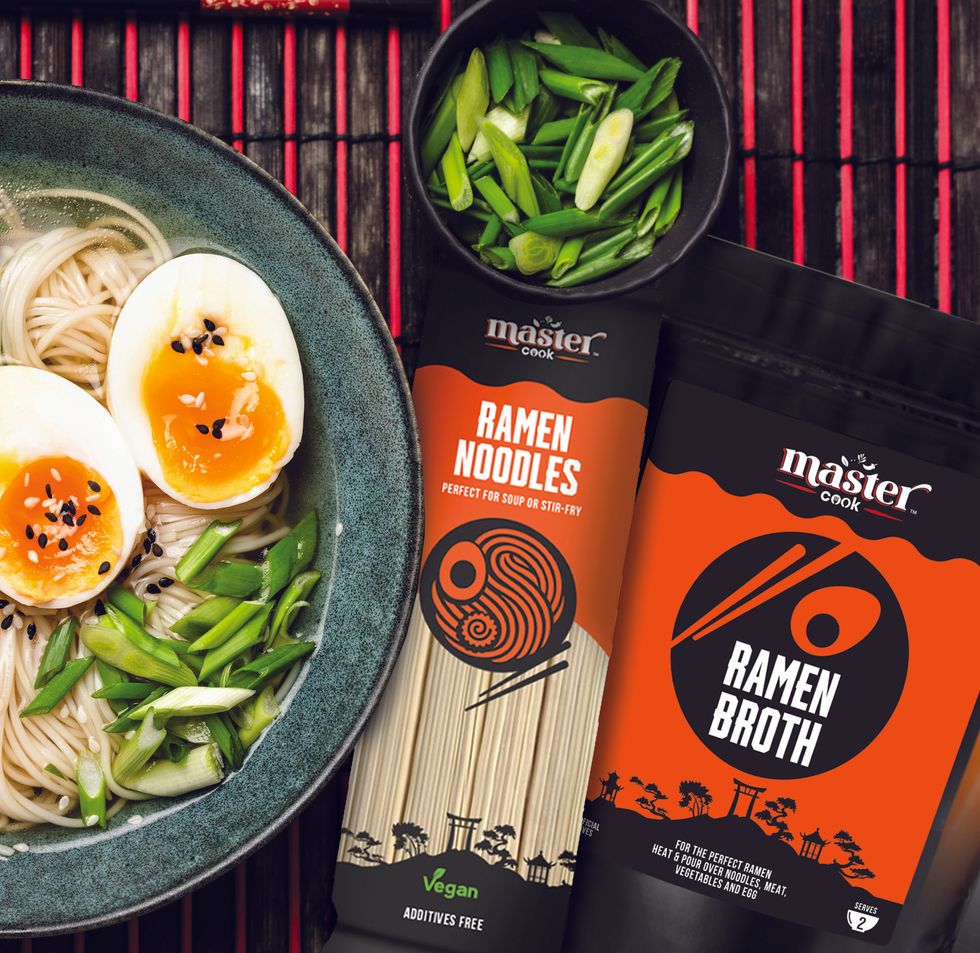
Ambawatta tells Asian Trader, “At Empire Bespoke Foods, we’re responding to this demand with innovative new product development.
“Our Master Cook range features Indian, Japanese, Korean, Malay, Thai and Vietnamese cuisines and is expanding into the independent and convenience sector.
“It had a successful start, with some lines exceeding sales expectations at Morrisons.
“We’ve also launched Pekis, a Tex-Mex range of ‘heat & eat’ taco fillings designed for quick, flavour-packed meals, and continue to see strong performance from our Japanese brand S&B, which is listed across major retailers and wholesalers, including Costco.
“Malay and Vietnamese cuisines are still niche segments, but we are actively exploring this area as we hope these cuisines will gain more traction in coming years.”
NPD is really the key for the growth of world food sector.
“Insight points to a huge shift towards more regional Indian and Asian flavours than mainstream dishes.
“Taking this into account, we’re currently working on a range of heat & eat Indian Dal + rice kits which captures regional Indian flavours that are somewhat new to the customers.
“Additionally, we’re also developing a range of fan favourite Asian sauces to launch later in the year in the Master Cook range, which include a Gochujang paste and a Gachujang ketchup.
“We work with chefs to create bold Asian flavours that consumers are looking to add that splash of delicious convenience to their world food dishes,” Ambawatta tells Asian Trader.
African and Caribbean cuisines are also rising fast from niche to mainstream as Britain’s Black African and Afro-Caribbean communities grow and as more Brits discover the joy of jerk chicken, West African stews or East African spices.
Macorison from Tropical Sun foods tells Asian Trader, “All signs point to West African cuisine as the next major wave in world foods.
“From jollof rice to egusi soup, these bold, vibrant dishes are fast becoming familiar to UK consumers, not just through diaspora demand but increasingly via food markets, pop-ups, and high street outlets.
“Retail is catching on. Sainsbury’s recently became the first UK supermarket to roll out the Africa’s finest range nationwide, a strong indicator of growing appetite and commercial opportunity.”
Macorison particularly sees a lot of potential in Suya.
“Dubbed the West African answer to satay, Suya is a spicy, smoky, nutty skewered meat dish, typically made with beef, ram or chicken. Packed with umami and versatile enough to be used as a rub or paste, it’s winning fans far beyond its Nigerian and Sudanese roots (where it’s known as Agashe).
“Expect to see more Suya-inspired products hitting shelves soon, as British palates continue to embrace bolder global flavors,” she adds.

The range by Tropical Sun is a must-stock in this section.
According to Macorison, Tropical Sun's appeal lies in its pan-global relevance.
“Plantain chips, for example, resonate across Latin, Caribbean and African communities,” she notes. “Our growth is driven by our commitment to authenticity and accessibility.”
“That commitment is clearly paying off. While the crisps category struggled in 2023, volumes fell 1.1 per cent, Tropical Sun’s world snacks bucked the trend, with sales up a staggering 51 per cent, thanks to the popularity of plantain and cassava chips, as well as spiced nuts.”
Retailers should tailor their product range based on local customers, so understanding local demographics is key to making the most of this opportunity.
In areas like Henley-on-Thames, pounded yam or fufu flour might have limited traction, but products with broad crossover appeal, think jerk marinades and hot sauces, can drive incremental sales.
Remove product duplication, remember 20 per cent of SKUs typically contribute to 80 per cent of sales, adds Macorison. Stock well-known brands to instill confidence and drive conversion and range price-marked packs, where possible.
“Our new herbal tea range is proving extremely successful and we are supporting retailers with a high-profile advertising campaign across radio and outdoor including bus shelters, bill boards and bus wraps,” Macorison adds.
Jerk seasoning and sauce, plantain, cassava flour, Caribbean hot pepper sauces, ackee (for Jamaica’s national dish ackee & saltfish), African spice blends like berbere or suya, pounded yam, and fufu flour are some of the things to consider while stocking this section.
Many of these items have historically been found only in specialist Afro-Caribbean shops, so carrying even a select few can draw a loyal following.
Middle Eastern cuisine (Turkish, Lebanese, Persian, etc.) overlaps with Mediterranean in use of ingredients like olives, hummus, flatbreads, and spices. Many of these items like hummus, falafel mix, tahini, couscous, halloumi are already well integrated into UK diets.
What can set you apart is having authentic touches like jars of harissa paste, pomegranate molasses, sumac spice, Turkish delight, or Iranian saffron for example.
Don’t overlook Mediterranean staples either like Italian and Greek items (pasta varieties, Italian passata, Greek olive oil, dolmades) are solid sellers that complement a world foods display.
In fact, Italian and rice products together still account for about 55 per cent of world cuisine retail sales by value, largely because pasta and rice are universal staples across many cuisines.
Truffles, caviar, saffron, and Wagyu beef are often associated with opulence, with their renowned scarcity and high price tags positioning them as a rare treat. However, in recent years, there’s been a noticeable shift.
Be Truffle, the new Italian brand, is providing a refreshing approach to the consumption of truffles, moving them away from the exclusive realms of fine cuisine towards a more relaxed, at home dining experience.
Rita Brugnoli founder of Be Truffle, says, “The rise of celebrity chefs, cooking shows, food blogs, and social media platforms has made gourmet cooking more visible and achievable, all of which are boosting the profile of luxury ingredients to the everyday cook.
“With the help of influencers and food critics, people are becoming increasingly curious about these high-end ingredients and eager to try them in their own culinary creations.
“The modern consumer is also more aware of the origins of their food, seeking out unique ingredients that offer both superior taste and sustainability.
“As people grow more interested in ‘food culture’, the lines between casual dining and gourmet meals have become blurred, making luxury ingredients seem more like a natural part of everyday cooking."
The Be Truffle range includes everything from sliced and whole truffle, truffle butter, truffle honey, truffle salts, truffle powder and truffle-based olive oils. Unlike other truffle ranges, the brand stands out from the crowd by also injecting new life into everyday sauces such as mayonnaise, ketchup, BBQ, sweet chili, soy and mustard.
In addition, Be Truffle goes one step further, introducing innovative and unique truffle combinations such as a truffle based ponzu sauce and a unique truffle flavoured maple syrup.
And let’s not forget that the UK is also home to sizable Polish, Romanian, Lithuanian and other Eastern European communities, and their influence on food retail is increasing.
Many convenience stores, especially in urban areas, now devote an Eastern European section on the shelf featuring items like Polish sausages (kielbasa), sauerkraut, pickled vegetables (gherkins, cabbage), rye bread, pierogi (dumplings) in the freezer, Polish-branded sweets and chocolates, fruit syrups, and canned fish.
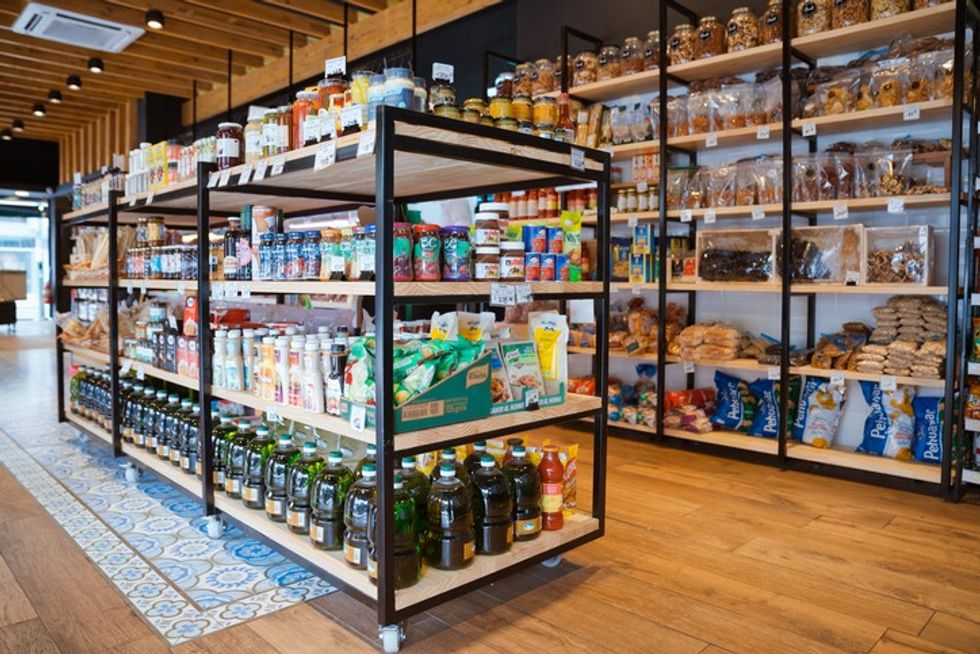
If your local area has Eastern European residents, even a small range of homeland brands can secure their regular patronage.
Finally, one of the flashiest trends in world foods retail, which is basically the imported American and other international snacks, sweets, and cereals. From Reese’s Peanut Butter Cups and Hershey’s cookies-and-cream bars to colorful American breakfast cereals, root beer, Cheetos and Twinkies, these items have become cult favorites among UK youth and nostalgia-seeking adults.
Convenience retailers can capitalize by dedicating a small shelf to “international treats” featuring American, Indian, Italian or other foreign goodies. They are impulse buys that can generate buzz.
Social media has indeed turbo-charged the American snacks craze, with influencers posting “candy haul” videos that drive kids to hunt down the same weird and wonderful sweets.
However, a caution: if you do stock imported snacks, ensure they come from reputable suppliers who comply with UK safety and labeling standards.
Beverages from Around the World
No discussion of world foods is complete without world drinks.
Shoppers who enjoy global cuisines often look for authentic beverages to match. Moreover, unique drinks can appeal to customers in their own right, encouraging impulse buys and repeat visits from those chasing a favorite flavor from home or abroad.
On the non-alcoholic side, consider stocking exotic soft drinks and juices that cater to international tastes. For example, Aloe vera juice drinks (popular in East Asia and among health-conscious consumers) have crossed into the UK market in a big way.
Similarly, malt drinks (non-alcoholic malted beverages like Malta or Supermalt) are favorites in African and Caribbean communities.
Other soft drink ideas are coconut water (originating from tropical countries but now mainstream for hydration), Mexican sodas like Jarritos (with unique flavors like tamarind or guava), Japanese canned coffees or melon cream soda, and specialty Asian teas or drinkable yogurts.
These items stand out from the cola crowd and can be priced for healthy margins due to their novelty.
Now onto alcoholic beverages, specifically the booming World Beer segment. In recent years, British beer drinkers have broadened their palates far beyond the traditional domestic lagers and ales. The result? “World beers” and craft specialities are on a huge growth trajectory.
It’s worth also watching the innovation in this space. World food and drink is not only growing in volume but also in cultural significance.
Nick Gillett, MD, Mangrove Global, says, “While the ethnic food market in the UK is predicted to nearly double between 2023 and 2032, the drinks category is becoming part of this same conversation.
“Consumers are actively seeking drink options that complement their cultural culinary choices at home, blending traditional meals with spirits that carry heritage, meaning, and flavour alignment.”
Customers want more than just taste. They’re searching for bottles with provenance, authenticity, and identity tied to culture. This has led to growing momentum for products like Caribbean rums, Indian whiskies, and West African bitters, creating an exciting opportunity for retailers.
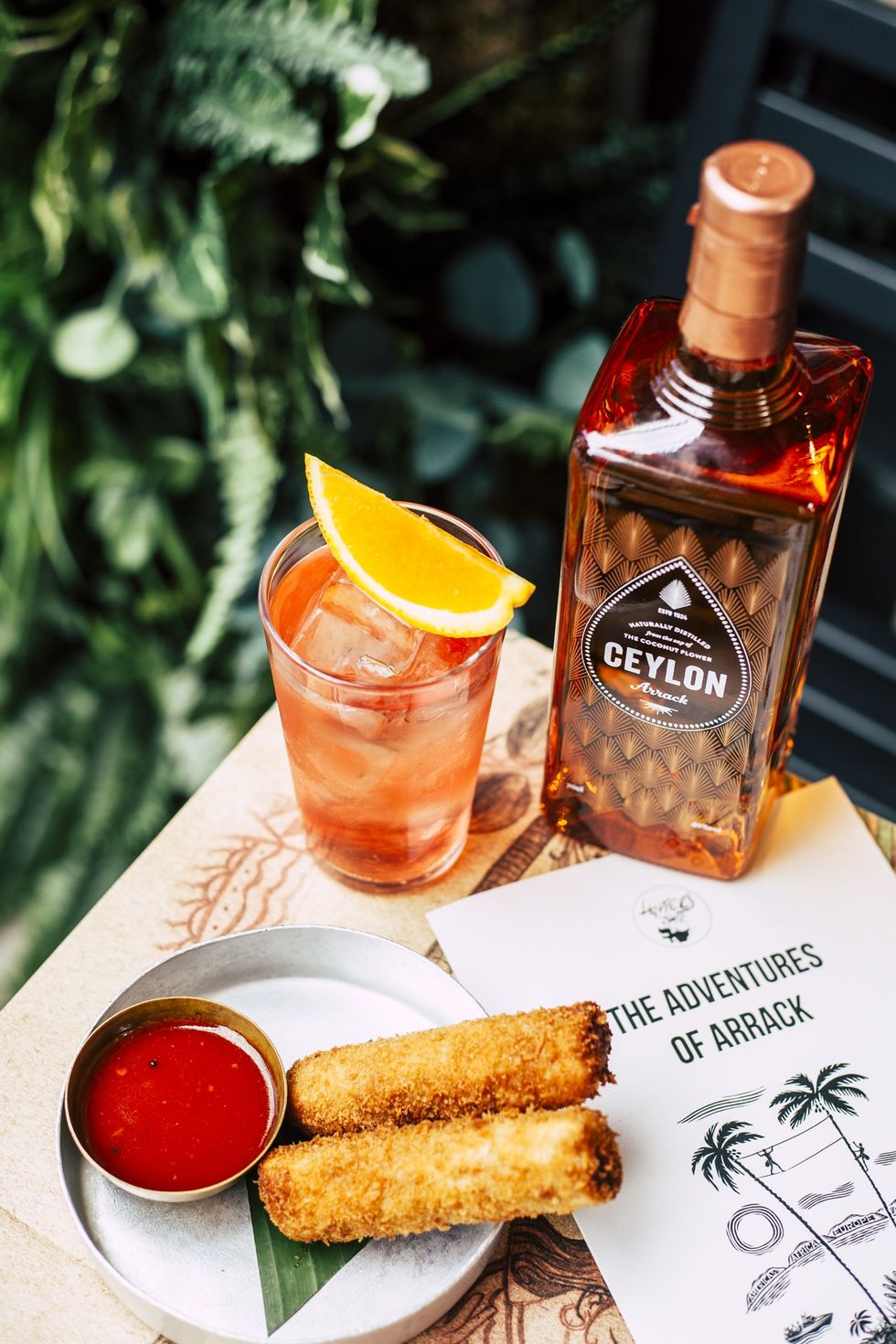
“Our focus at Mangrove Global centres on culturally rooted, flavour-focused spirits,” Gillett tells Asian Trader. “Partnering with independent global producers, we bring compelling drinks to UK consumers.
“Brands like Indri-Trini Indian Single Malt or Three Families Bitters exemplify our approach, grounding premium quality in meaningful heritage.
“We’ve seen this demand in action. For instance, Chairman’s Reserve Spiced Rum, now stocked by a major UK supermarket, continues to gain traction with significant on-trade growth.
“Meanwhile, Ceylon Arrack, representing Sri Lanka’s vibrant distillation tradition, is driving interest in areas with Tamil and South Indian shoppers.
“Authenticity and craft are making an impact, with bartenders and retailers gravitating to such niche but culturally important options.”
Consumers want drink choices that tell a story and align with the flavours they are exploring in food. Whether it’s pairing spirits with regional cuisine, opting for brands with authentic roots, or trying unique botanicals, the demand is shifting towards personal and meaningful experiences.
“One particularly notable trend is the re-emergence of European traditions, like aperitivo culture. Lower ABV drinks like vermouth are finding an audience among those who prefer moderation without compromising complexity. Dolin Vermouth de Chambéry perfectly reflects this trend and is becoming a staple for flavour-driven cocktails or light spritzes,” adds Gillett.
Retailers who focus on curation, cross-merchandising spirits with appropriate cuisines, and educating their customers about product connections, will not only cater to this growing category but can also elevate sales.
Gillett expects a bigger role of world spirits in enhancing the ‘world food’ experience, not just as an accessory but as integral to cultural connection.
Premium spirits, which now command 35 per cent of the market by value, will continue to thrive under the ‘drink less, but better’ ethos. Alongside this, the no/low alcohol category is set for remarkable growth, reflecting a broader shift toward mindful drinking.
With African and Caribbean drinks gaining ground and consumers craving authenticity and regional uniqueness, education and thoughtful merchandising will be the keys to unlocking category potential, he adds.
By curating a drink selection as globally rich as your food selection, you encourage shoppers to make your store a one-stop shop for their whole meal experience (international main course and the authentic drink to go with it).
Making World Foods Work for You
Millions of Britons have heritage in South Asia, Africa, the Caribbean, Eastern Europe and beyond and they crave a “taste of home.”
These shoppers are often delighted to find their local convenience store carries the brands and ingredients they grew up with.
Unique products bring new faces into your store. Imagine a local Asian family driving past several generic shops to visit yours because they know you stock their preferred brand of Basmati rice or halal chicken spice.
Or a foodie who heard via Facebook that you have that limited-edition Korean snack – they might detour to come buy it. These customers might not have visited otherwise.
A great real-world example is a Freshfield store run by retailer Benedict Selvaratnam in Croydon. With a large South Asian community nearby, Selvaratnam’s store “goes big on World foods,” offering customers spices and sauces from India, South Africa and beyond, tailored to local tastes.
Stocking a world foods range is not quite as simple as piling random foreign products on a shelf. It requires strategy and understanding of your market.
Study the demographics and demand in your area. Is there a significant Polish community? Are many of your customers of South Asian heritage? What age group shops with you most? Use this intel to prioritize which cuisines to focus on.
Conversely, in a student area with diverse young residents, a broad but shallow assortment of trending snacks and easy meal kits from around the world might perform best. Don’t be afraid to ask customers for feedback or requests.
Every community and customer base is unique, agrees Gillett, saying which is why Mangrove works hand-in-hand with independent retailers to tailor advice and strategies.
‘From providing product education that helps team members recommend with confidence, to POS support and in-store activations for seasonal opportunities, we aim to elevate the shopper experience.
“Our approach ensures shelves reflect relevance, authenticity and an emphasis on flavour. We promote discovery without resorting to tokenism, helping retailers assemble a portfolio that truly resonates with their customer base.
Mangrove Global represents a collection of evocative, culturally grounded brands offering retailers a chance to stand out by connecting with their local communities.
Be it Indri-Trini Three Wood Indian Single Malt for Diwali and Eid gifting, Three Families Bitters enhancing culturally-inspired cocktails, or Chairman’s Reserve Spiced Rum as a companion to Caribbean dishes, Mangrove Global’s portfolio is designed to meet diverse needs.
“We believe in crafting experiences rooted in flavour and culture. It’s about more than stock; it’s about storytelling, discovery, and delivering what matters most to your customers.
“Keep your shelves current, relevant, and full of flavour-driven options with Mangrove’s carefully curated selections. We’re here to help ignite inspiration and boost your world food and drink category,” adds Gillett.
Keep an eye on the yearly events.
Beheshti from Tilda says, “We also work closely with independents around key cultural moments like Diwali and Ramadan, offering seasonal POS, themed displays and cross-category promotions that create in-store theatre.
“These activations boost relevance and help retailers’ cash in on the seasonal surge in World Food & Drink sales by pointing shoppers to the most popular products during these times, like our 2024 Great Taste Award-winning Tilda Grand Extra Long Basmati.
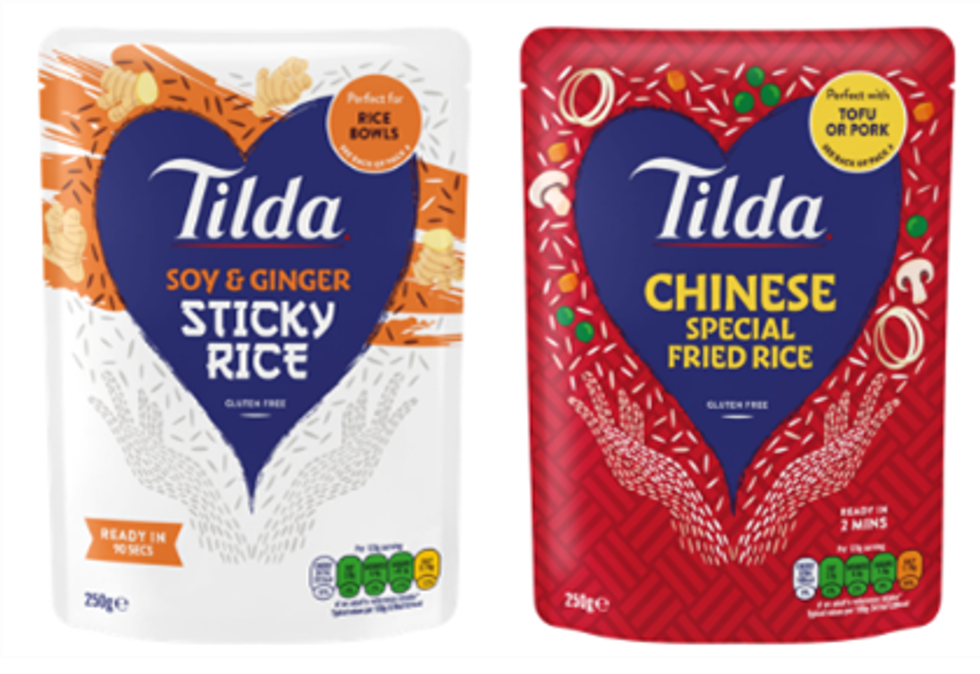
“Underpinning it all is our sustainability commitment. Our B Corp status isn't just a badge – it reflects meaningful action across sourcing, farming, and packaging.
“We're working with over 2,500 rice farmers in India to cut emissions, reduce water use, and help build a more ethical, transparent food system. This matters to today’s more conscious shopper – and is part of what helps Tilda stand out.”
Source reputable and authentic brands that your target shoppers recognise and trust. Whether it’s Nigeria’s Indomie noodles, India’s MDH spices, Poland’s Wawel candies, or Mexico’s Jarritos soda, carrying the real deal will keep customers coming back.
Partner with established ethnic food wholesalers or cash-and-carry suppliers who specialize in these lines as they can ensure the products meet UK standards and often advise on the bestselling SKUs.
Furthermore, how you present world foods in-store can make a big difference. Many retailers dedicate a “World Foods” aisle or section, grouping multiple cuisines together.
Others integrate ethnic products into general aisles (like putting chickpea flour next to regular flour, or foreign confectionery in the snacks aisle). Choose what suits your store size and shopper behavior.
Also, do cross-merchandise where possible. Place staples like rice and noodles at lower levels (they’re heavy; people will seek them out) and eye-catching sauces or spices at eye level.
Don’t keep your world food offering a secret. Use window posters or sidewalk signs.
If you’re active on social media, showcase new arrivals and worldly finds on Facebook, Instagram or local community groups.
Some retailers have had success hosting mini events, like an “international food day” with special discounts on world food items, music from that culture, or small giveaways. This creates buzz and positions your store as not just a shop, but a community hub celebrating diversity.
Embracing Global Flavors for Local Success
World food trend is here to stay, and it’s reshaping the convenience channel in exciting ways. Embracing global flavors is not only a growth strategy but it is fast becoming a baseline expectation from customers. In communities big and small, people are looking for a taste of the
wider world, and the corner shop that provides it will reap the rewards in revenue, footfall, and goodwill.
In the end, investing in world foods is investing in your store’s future. The UK is only becoming more diverse in population and palate; convenience retailers who evolve with this trend will thrive, those who don’t may find themselves left behind with dwindling relevance.
So stock those shelves with spices and noodles, plug in an extra cooler for international drinks, put up a bright “World Foods” sign, and let the aromas of masala and soy and peri-peri waft through your aisles.
Global flavors can indeed translate into local success – and in the process, make your convenience store not just a place to buy things, but a gateway to the world’s pantry, right on your doorstep.

